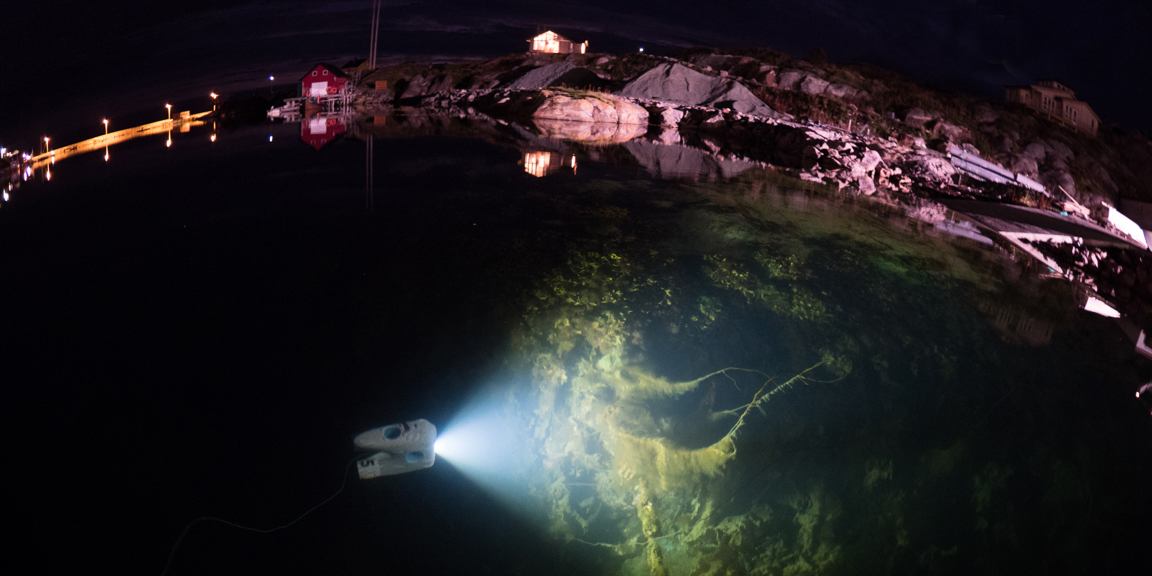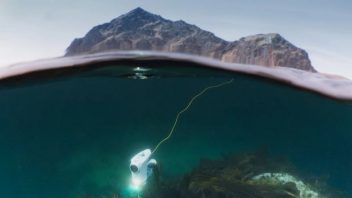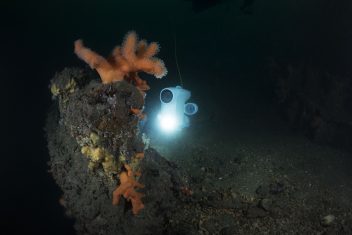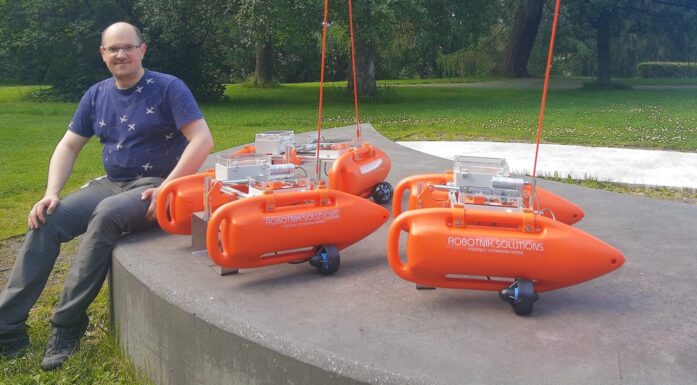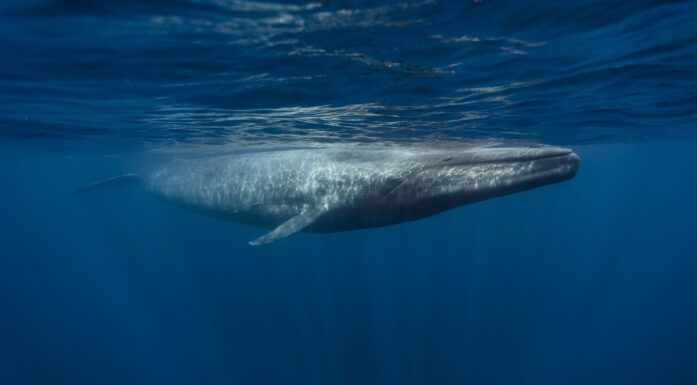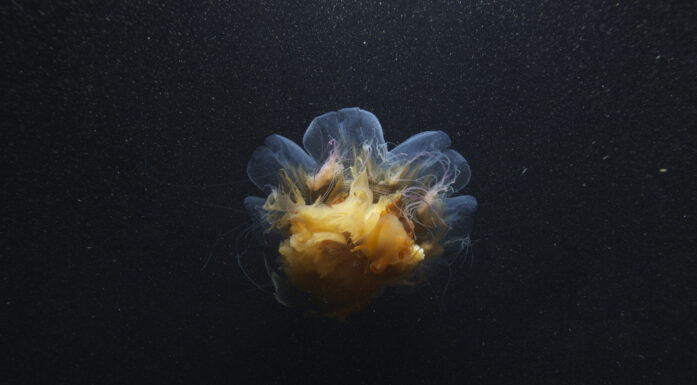Secrets of the sea raised from the depths
The mysteries below the ocean’s surface have triggered human exploration and imagination for centuries. New marine robotics now make it possible to explore what goes on in the ocean depths.
The ocean covers fully two thirds of our planet and still holds deep mysteries. It offers great opportunities for industries, such as cultivating algae for food, fuel and energy production, fisheries, farming, renewable energy from wind and waves, extracting minerals, metals, oil and gas, transport, and perhaps other as yet unknown industries. A big part of future business development is predicted to take place in connection with the ocean.
The ocean can also tell us a lot about the state of the planet. We know some things. But remains infinitely much that we don’t know remains to be learned.
“About 90 per cent of the ocean hasn’t yet been explored. It’s difficult to measure and obtain samples from the ocean, and this is where marine robotics offers solutions,” says Martin Ludvigsen, director of NTNU’s Applied Underwater Robotics (AUR) lab.
Article continues below the video.
The researchers used a Jetyak vehicle that operates on the ocean surface. It is simple and cheap to produce, enabling rapid development and testing.
“It’s simple to change the Jetyak mechanically and to create software for it. Because the device is so small, it’s also easy to transport and launch, and it has plenty of space for scientific instruments and sensors,” says Ludvigsen.
The computers on board use open source software to control, communicate with and navigate the system. This makes it possible for the researchers to test their own solutions, but also to use the results of other researchers they collaborate with. All of these factors make the Jetyak a flexible tool for developing a more effective concept and for data collection in oceanographic research.
- You might also like: Shedding light on zooplankton in the dark
Underwater robot for the people
On a global scale, Norway generally leads the way in marine and maritime technology. For almost 50 years, Norway has been working to develop offshore technology for the oil and gas industry, and the knowledge from this industry is now being used for other new industries and applications. These include developing technology for underwater vehicles and navigation and dynamic positioning.
These new technologies are the focus for researchers and engineers at the NTNU AUR-lab and NTNU AMOS (Centre for Autonomous Marine Operations and Systems). The centres work closely with businesses and with SINTEF Energy Research.
The start-up company Blueye Robotics AS has emerged out of this collaborative environment and developed Blueye Pioneer, a camera-equipped underwater drone. The ocean drone will soon be available on the national and international consumer market.
Blueye Robotics combines innovative ocean technology with its knowledge of user experience to create professional underwater drones for consumers. Blueye Pioneer is a remotely operated vehicle (ROV) capable of operating down to 150 metres, far deeper than other drones.
Blueye has a highly light-sensitive camera, and the drones manage to stay stable even under rough ocean conditions. A smartphone, tablet or PC connected via a cable controls the drone, which can also be fitted with sensors to measure water qualities, such as temperature, chlorophyll, and salinity.
- You might also like: Kon-Tiki2 expedition in Heyerdahl’s wake
Recipient of consumer technology award
Blueye Pioneer has been selected as an Honoree by the CES 2018 Innovation Awards, which is an annual competition for outstanding consumer technology products.
“What we’ve done is to start with basic technology and develop it for a consumer market – which is quite un-Norwegian its approach. But we think it has good potential,” says Ludvigsen.
He draws a parallel with what has happened to aerial drone technology, which in the space of only a few years has gone from being an expensive technology reserved for the few to now being accessible to practically everyone. The NTNU researchers and Blueye believe that the same thing could happen with ROVs.
“We hope that the Blueye Pioneer will increase people’s awareness of the ocean and what is beneath the surface. By giving people access to the ocean, we think that they’ll also become curious about it and love it,” says Ludvigsen.
- You might also like: Dark lords, werewolves and Indiana Jones in the polar night
Studying the world’s largest coral reef in Australia
The ocean is a huge resource, but at the same time it’s also vulnerable.
“There’s so much we don’t know, but that we need to know to understand and take care of this vulnerable resource,” says Christine Spiten, co-founder of Blueye.
“Blueye Pioneer gives people who are curious about the ocean the opportunity to dive into the depths without interfering with the fragile environment,” says Spiten.
The underwater drone was launched last summer and was used to explore Australia’s Great Barrier Reef, the world’s largest known coral reef, last fall.
Dean Miller, Director for Science and Media at the Great Barrier Reef Legacy, stated in the 10 November 2017 Sydney Morning Herald that the Great Barrier Reef Marine Park is an area that is large and difficult to access. “The Blueye Pioneer drone can help us to better understand this fragile ecosystem, especially the reef’s most remote, unexplored reaches that divers can’t easily access,” he says.
“We have a good broad-scale understanding of how the Great Barrier Reef was affected by the two consecutive bleaching events,” Miller says. “What we don’t understand in great detail is how individual coral species and individual reefs have fared through this heat stress. We want to identify and fully understand the coral species that are able to make it through these events, and therefore we will have a much better idea where to invest our energy and resources for restoration efforts.”
Working closely with users
This is the story of one of the underwater robots that originated in NTNU’s research lab.
“We work at the intersection of engineering science and fundamental research. The basic idea in our lab is that we as technologists work closely with researchers who’ll be using the technology. This interdisciplinarity is key. We have to make sure that the technology we’re developing is relevant,” Ludvigsen says.
On one expedition, underwater robots accompanied biologists to Svalbard to chart marine life during the polar night.
Robotics technology from the NTNU lab has also travelled down to one of the deepest areas in the world’s oceans, bringing up video recordings of living organisms at a depth of 8000 meters from the Puerto Rico trench two years ago.
Marine robotics with sensors participated in the Kon-Tiki2 expedition in 2016, which retraced Thor Heyerdahl’s historic Kon-Tiki route on two balsa rafts. Robot technology helped gather information about the ocean on the expedition’s lengthy journey.
Cheaper and more efficient
The technology is also widely used in the Trondheim fjord, which in 2017 was designated as the world’s first test area for autonomous technology.
“There are several advantages to this type of technology. It’s efficient and cheap to use AUVs, and the research vessels can be many times more efficient with the help of robots. We can obtain results that aren’t possible with conventional measurements. Instead of spot measurements, AUVs can provide measurements that extend in time and space. We’re very proud of the technology developed here,” says Ludvigsen.
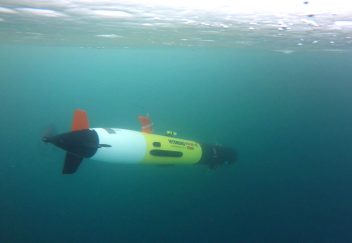
This is the REMUS AUV operating under the ice in the Van Mijenfjord in Svalbard. Photo: Martin Ludvigsen / NTNU
Underwater monitoring and repairs
Developing robots that can monitor underwater installations and carry out repairs on site are another important use for maritime and marine technology. These installations could include oil platforms or fish farms, for example.
The potential savings are huge, both in terms of time and money. Equipment that continuously monitors installations can improve safety by detecting any damage or weaknesses early.
Norwegians and the sea
Kongsberg Maritime is actively involved in developing autonomous vehicles and underwater robots.
“This could be the next step in the history of Norway and maritime technology. Norwegians have always lived in close interaction with the sea and have a good baseline of understanding to develop this further,” says Erlend Vågsholm, product manager for Kongsberg Maritime.
